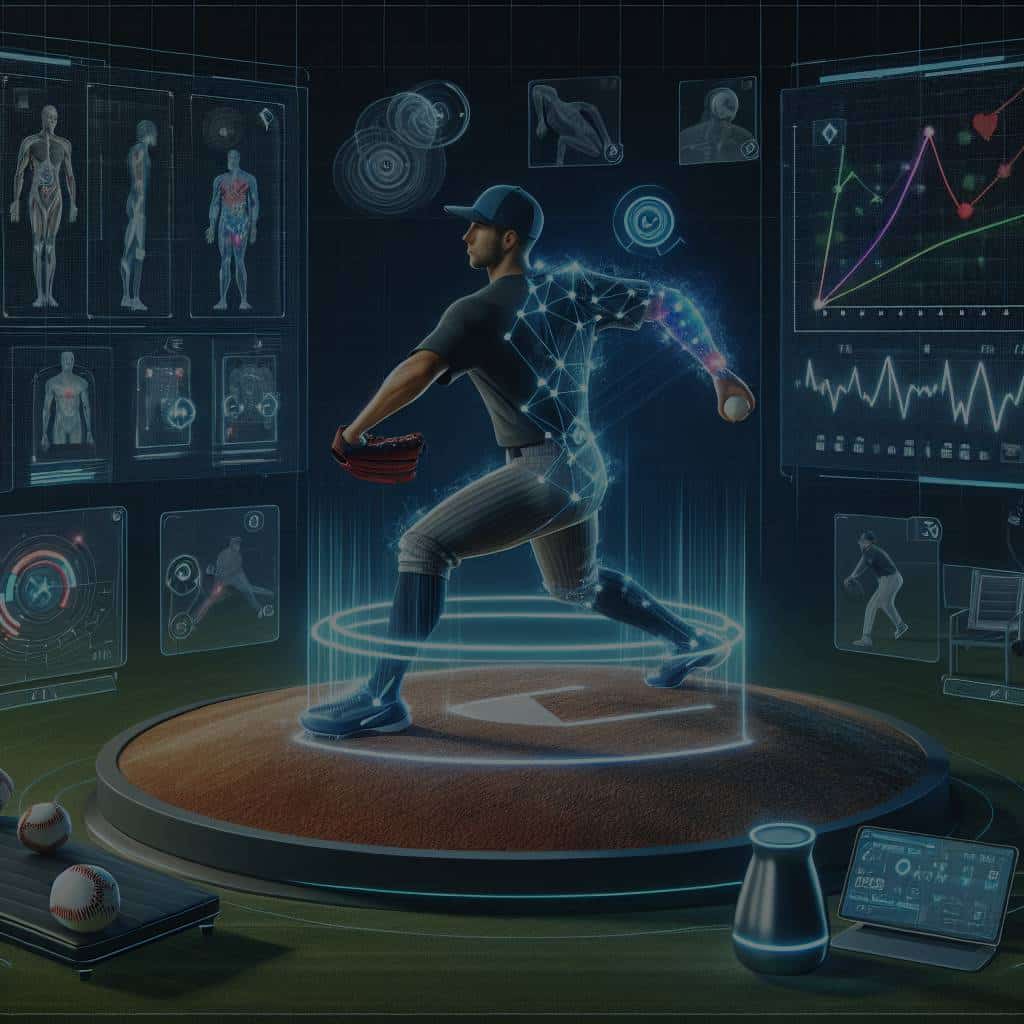Baseball has always been a sport where data and statistics are crucial. In recent years, however, advances in technology have allowed for more precise tracking and analysis of player performance. This is especially true for pitchers, who are often at risk of injuries due to the intense strain that pitching places on the body. By utilizing technology to track performance and recovery, teams can help prevent injuries, improve player health, and ultimately enhance on-field performance. In this article, we will explore how technology is being used to track and improve recovery in baseball pitchers.
The Role of Data in Baseball
Data has always played a pivotal role in baseball. It’s embedded in every facet of the sport – from determining batting averages to calculating ERA (Earned Run Rate) for pitchers. But the advent of technology has magnified the importance of data in the sport.
Additional reading : What’s the Role of Stabilization Exercises in Preventing Shoulder Injuries in Swimmers?
The use of technology in sports, particularly baseball, has led to what is commonly referred to as ‘sabermetrics’ – the empirical analysis of baseball data to measure in-game performances and activity. The insights derived from this advanced data analysis can be used to prevent injuries, improve training, and enhance performance.
Technology for Injury Prevention and Recovery
As you may know, the health of a pitcher’s arm is paramount in baseball. Any injury to a pitcher’s arm can be devastating, not only for the player but also for the entire team. This is where technology comes in.
Also to discover : What Are the Latest Techniques in Speed Skating for Maximizing Cornering Speed?
Cutting-edge tech like motion capture systems and wearable devices are being used in the MLB to track the movements of pitchers in real-time. These systems capture every nuance of a pitcher’s motion – from the wind-up to the release of the ball. By analyzing this data, teams can detect subtle changes in a pitcher’s motion that may indicate fatigue or the risk of an impending injury.
For instance, a decrease in pitch velocity over time could be an indicator of fatigue. By identifying this early on, teams can take proactive measures, such as adjusting a pitcher’s training regimen or giving the player more rest time, to prevent potential injuries.
Improving Pitching Performance with Technology
When it comes to improving pitching performance, technology again plays a crucial role. High-speed cameras and radar technology are typically used to analyze a pitcher’s throw. These technologies can provide a wealth of data about a pitcher’s performance, including the velocity, spin rate, and trajectory of a pitch.
Furthermore, technology can help pitchers fine-tune their pitching mechanics. For example, virtual reality (VR) technology can provide a first-person perspective of a pitcher’s throw. By studying this VR footage, pitchers can get a better understanding of their mechanics and make necessary adjustments to improve their delivery.
The Future of Technology in Baseball
Technology has already made significant strides in baseball, but the future holds even more promise. For instance, new developments in AI and machine learning could potentially revolutionize how data is used in baseball.
Imagine a scenario where an AI system can predict a pitcher’s risk of injury based on data such as pitch count, velocity, and fatigue levels. This kind of predictive analysis could be a game-changer in preventing injuries and improving player recovery.
Moreover, advancements in wearable technology could provide more precise and real-time data about a player’s physical condition. We’re talking about wearable devices that could track heart rate, body temperature, sleep patterns, and even stress levels. This data could provide invaluable insights into a player’s overall health and recovery, paving the way for personalized training programs and improved on-field performance.
Conclusion
While technology cannot entirely eliminate the risk of injuries in baseball, it can undoubtedly help mitigate them. By leveraging data and technology, we can track pitchers’ performance more closely, predict potential injuries, and personalize recovery plans. The future of baseball lies in harnessing technology to its fullest, turning data into actionable insights that can keep players healthy, improve their performance, and ultimately change the game.
Just remember, technology is not a silver bullet. It’s a tool to be used alongside tried-and-true methods of injury prevention and recovery, such as proper training, adequate rest, and good nutrition. But there’s no denying that technology has become a crucial player in the game of baseball, and its role will only continue to grow.
Biometric Data and Its Role in Baseball Pitching
Biometric data refers to statistics and information related to human characteristics, behaviors, and physical traits. This data can be instrumental in assessing the health and performance of baseball pitchers. The use of biometric data in sports is not a new concept, but the sophistication and accuracy of data collection have improved drastically with advancements in technology.
Wearable technology like smartwatches and heart rate monitors are commonly used to gather biometric data. These devices can track a player’s heart rate, sleep patterns, and even stress levels in real-time. The data collected can then be analyzed to make informed decisions about a player’s training regimen, pitch selection, and recovery process.
For instance, a higher than the usual heart rate during a game could indicate that a pitcher is overexerting themselves. This could be a sign of fatigue, which, if not addressed promptly, could lead to injuries. On the other hand, abnormal sleep patterns could signal that a player is not getting enough rest, which could negatively impact their performance and recovery.
In addition to wearable technology, motion capture systems are also used to collect biometric data. These systems can track every facet of a pitcher’s motion – from the wind-up to the release of the ball. This data can be useful in identifying subtle changes in a pitcher’s motion that could indicate a potential injury risk.
For example, a decrease in pitch velocity or a change in spin rate could be suggestive of fatigue or a problem with the ulnar collateral ligament, a common injury in baseball pitchers. By detecting these changes early on, teams can take proactive measures to prevent injuries and facilitate recovery.
Immersion Lab and Virtual Reality in Pitching Performance
An immersion lab is a high-tech facility equipped with virtual reality (VR) technology. This technology is increasingly being used in professional baseball to improve pitching performance. In an immersion lab, pitchers can immerse themselves in a simulated baseball game, allowing them to practice their pitching in a controlled environment.
VR technology can provide a first-person perspective of a pitcher’s throw, giving them a unique insight into their pitching mechanics. By studying this VR footage, pitchers can identify areas of improvement and make necessary adjustments to their delivery.
For instance, they can work on their pitch selection, focusing on pitches that they struggle with during real games. They can also use the technology to practice against specific batters, studying their strengths and weaknesses to develop effective pitching strategies.
Furthermore, VR technology can also be used for injury prevention and recovery. A pitcher recovering from an injury can use VR to gradually reintroduce pitching motions without exerting physical stress on their body. This can help prevent re-injury and speed up the recovery process.
Conclusion
In conclusion, technology has emerged as a vital tool in tracking and improving recovery in baseball pitchers. Biometric data, collected via wearable technology and motion capture systems, can provide invaluable insights into a pitcher’s health and performance. Furthermore, virtual reality technology, particularly in the context of an immersion lab, can aid in refining pitching mechanics and facilitating injury recovery.
However, as we embrace technology and its benefits, we must not forget the importance of traditional methods of injury prevention and recovery, such as proper training, adequate rest, and good nutrition. In the end, a balanced approach that effectively combines both technological and traditional methods is the key to ensuring the health and performance of baseball pitchers in the Major League and beyond.
The future of technology in baseball is exciting and holds immense potential – from AI systems capable of predicting injury risk, to wearable devices tracking real-time biometric data. The challenge lies in effectively harnessing this technology to turn data into actionable insights, and in doing so, transform the realm of professional baseball. As we move forward, there is no doubt that technology will continue to play an increasingly significant role in the game of baseball.






